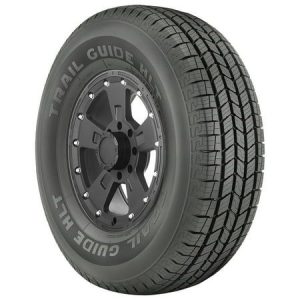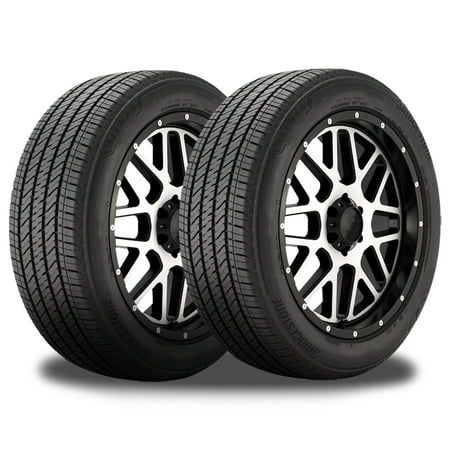Living in areas with harsh winter conditions necessitates equipping your vehicle for safe driving. Studded tires, also known as winter tires, provide superior traction on snow and ice compared to all-season tires. While purchasing pre-studded tires is an option, some drivers prefer the cost-effectiveness of studding their existing tires. This guide delves into everything you need to know about how to stud tires yourself, from understanding the process to essential safety considerations.
Understanding Studded Tires: Benefits and Considerations
Studded tires feature small metal studs embedded into the tread. These studs bite into ice and snow, enhancing grip and preventing slippage. Here’s a breakdown of the key benefits and considerations:

- Enhanced Winter Traction: Studs significantly improve traction on icy and snow-covered roads, reducing stopping distances and increasing overall driving control.
- Safety in Severe Winter Conditions: In areas with frequent snowfall and icy roads, studded tires provide an extra layer of safety for drivers and passengers.
- Legal Restrictions: Studded tire legality varies by state and region. Always check your local regulations before modifying your tires. Some areas have restrictions on stud type, allowed usage windows, or limitations on specific road types.
While studded tires excel in winter conditions, they can offer reduced traction on dry pavement and may cause minor damage to road surfaces. Consider these factors when deciding if studded tires are the right choice for your location and driving habits.
Before You Begin: Essential Tools and Materials
If you’ve decided to stud your own tires, ensure you have the necessary tools and materials for the job. Here’s a checklist:
- Studded Tires: Select tires with sufficient tread depth to accommodate the studs. Using worn-out tires with studs can be unsafe and ineffective.
- Tire Studs: Choose the appropriate stud size and type for your tires. Consider factors like stud length, stud material (tungsten carbide is a common choice), and stud design (screw-in or flange-based).
- Tire Stud Installation Tool: This specialized tool allows for efficient and safe stud insertion. Options include manual or air-powered stud guns.
- Safety Glasses: Protect your eyes from flying debris during the studding process.
- Work Gloves: Protect your hands from cuts and abrasions.
- Lubricant: A lubricant like soapy water can ease stud insertion.
- Air Compressor (optional): An air compressor is required for air-powered stud gun operation.
- Tire Pressure Gauge: Double-check tire pressure after installation.
It’s advisable to practice stud installation on a scrap tire before tackling your actual tires. This helps you get comfortable with the tool and ensures proper technique.
Step-by-Step Guide: How to Stud Your Tires Safely
Now that you’re armed with the necessary tools and knowledge, here’s a step-by-step guide on how to stud your tires safely:

- Preparation: Park your vehicle on a level surface and ensure the parking brake is engaged. Loosen the lug nuts on each wheel slightly (don’t remove them completely yet).
- Tire Removal: Safely jack up your vehicle and remove each wheel. Place the wheels on a stable surface for studding.
- Tire Cleaning: Thoroughly clean the tire tread area to remove any dirt, debris, or old sealant that could hinder stud placement or adhesion.
- Stud Pattern Selection: Refer to your tire manufacturer’s recommendations or consult a stud pattern guide for optimal stud placement. A balanced stud pattern ensures even weight distribution and prevents vibrations. Mark the designated stud locations on the tire tread with a marker.
- Stud Installation: Following the markings, carefully insert each stud into the designated location using the stud installation tool. Ensure the stud is seated properly and flush with the tread surface. The stud gun will typically press the stud into the tire and clinch it in place.
- Repeat and Recheck: Repeat the stud insertion process for all designated locations on the tire. Double-check each stud to ensure proper seating and depth.
- Tire Balancing: Once all studs are installed, remount the tires on the vehicle and tighten the lug nuts to the manufacturer’s recommended torque specifications. Re-check the lug nut tightness after driving a few miles.
- Balance and Alignment: It’s highly recommended to have your tires professionally balanced and aligned after studding. This ensures even weight distribution and optimal handling.
Throughout the process, prioritize safety by wearing gloves and safety glasses. Only use tools in proper working condition and follow recommended safety practices when jacking up your vehicle.
Additional Tips for Successful Studded Tire Use
Here are some additional pointers to maximize the effectiveness and lifespan of your studded tires:

- Break-in Period: After installing new studs, allow for a break-in period of approximately 50 miles. Avoid aggressive driving maneuvers during this time to allow the studs to settle securely into the tire tread.
- Post-Stud Inspection: Regularly inspect your studded tires for loose or damaged studs. Replace any worn or damaged studs promptly to maintain optimal traction.
- Seasonal Storage: When winter weather subsides, and you switch back to regular tires, properly store your studded tires in a cool, dry place. This helps to preserve the rubber and prevent stud corrosion.
- Stud Removal: If you plan to reuse your studded tires for the following winter season, you may consider removing the studs during the off-season. This can help minimize wear and tear on the tire tread. However, consult a tire professional to ensure proper removal and re-installation techniques.
Limitations and Alternatives to Studded Tires
While studded tires offer significant winter traction benefits, they do come with some limitations:

- Reduced Traction on Dry Pavement: Studded tires can have slightly reduced traction on dry roads compared to all-season tires. This is due to the metal studs creating a less compliant contact patch with the road surface.
- Potential for Road Damage: Stud use can cause minor wear and tear on road surfaces. This is why some areas have restrictions on studded tire usage.
- Noise: Studded tires can generate increased road noise compared to regular tires.
If you’re concerned about the limitations of studded tires, here are some alternative options for winter driving:
- Dedicated Winter Tires: These non-studded winter tires feature a softer rubber compound and deeper tread design specifically formulated for superior traction in snow and ice.
- Snow Chains/Traction Mats: For occasional winter driving in extreme conditions, consider carrying snow chains or traction mats in your vehicle. These temporary solutions can provide added grip when needed.
Ultimately, the best choice for your vehicle depends on your individual driving habits, climate conditions, and local regulations.
The Importance of Winter Tire Maintenance
Regardless of whether you choose tires, dedicated winter tires, or all-season tires for winter driving, proper tire maintenance is crucial. Here are some key practices:

- Maintain Proper Tire Pressure: Regularly check and adjust tire pressure according to manufacturer recommendations. Fluctuating temperatures can affect tire pressure, so monitoring is especially important during winter.
- Tread Depth Check: Ensure your tires have sufficient tread depth for safe winter driving. Worn-out tires, with or without studs, will have reduced traction capabilities.
- Visual Inspection: Regularly inspect your tires for signs of damage, such as cuts, bulges, or uneven wear. Address any concerns promptly.
By following these simple maintenance tips, you can ensure your tires perform optimally throughout the winter season, keeping you safe on the road.
Peace of Mind on Winter Roads
Equipping your vehicle with the right tires for winter driving conditions is an investment in safety and peace of mind. Studded tires offer superior traction on snow and ice, but remember to check local regulations and consider the limitations. If studded tires aren’t the ideal choice, dedicated winter tires or temporary traction aids are viable alternatives.
